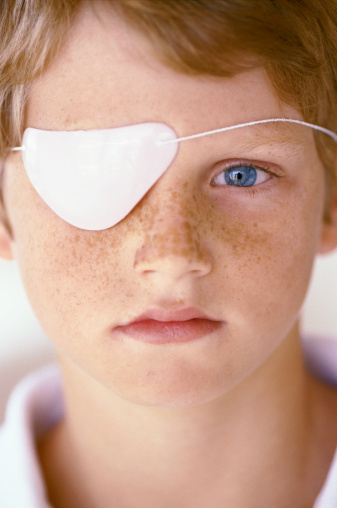Understanding this common vision problem often found in children.
There is no question that a child’s first few years of life are some of the most important for their development. Whether it’s the teaching of their A-B-C’s and 1-2-3’s, learning how to properly use the potty, or developing manners and behavior, what a child learns in those first few years often sticks with them well into their future. However, the brain is not the only thing developing during this vital time―a child’s first few years of life are also some of the most important for their eyesight.
 Once a child reaches the ages eight to ten, their brain’s vision system is typically finished developing. Therefore, any vision problems undetected before this time will typically be present throughout the rest of their life. In fact, having a child’s eye sight tested when they are young is such a vital part of their vision development that Prevent Blindness America has declared August the month of Children’s Eye Health and Safety Awareness.
Once a child reaches the ages eight to ten, their brain’s vision system is typically finished developing. Therefore, any vision problems undetected before this time will typically be present throughout the rest of their life. In fact, having a child’s eye sight tested when they are young is such a vital part of their vision development that Prevent Blindness America has declared August the month of Children’s Eye Health and Safety Awareness.
During this month, they are aiming to spread awareness of several important child eye care issues, including amblyopia. This common eye disease, often known as lazy eye, is one of the leading causes of vision loss in children and affects about 120,000 children in the United States every year.
It is extremely important that amblyopia is identified within a child’s first few years as equal vision in both eyes is essential for them to function normally. If a child does not have two-eye binocular vision, there is a good chance that they will always have difficulty with sports, school, depth-perception, hand-eye coordination and any other activity that requires clear, focused vision.
However, as long as parent’s have their child’s eyes examined regularly and understand the symptoms and causes of this disease, there is a good chance that their child will not suffer from amblyopia forever.
What Causes Amblyopia?
Lazy Eye is a vision problem that can affect both of the eyes, although it typically only affects just one. It can be caused by many different things such as crossed eyes, vision misalignment, a difference in image quality, one eye focusing better than the other, etc. In all of these cases, the child’s brain will naturally try to fix the two different images by blocking out the image from the weaker eye. Over time, the brain continues to ignore these pictures, causing the weak eye to become useless, triggering amblyopia.
What Are The Common Symptoms?
The most difficult part of this vision problem for many parents is the fact that the symptoms are not always obvious to anyone other than the child. However, you can keep an eye out for certain tell-tale signs of a vision problem:
- Favoring one eye over another
- Tendency to bump into objects on one side
- Closing or covering one eye when reading or watching television
- Eyes that appear cross-eyed or one eye that looks outwards
- Squints or complains when doing close-up work
How Do You Treat Amblyopia?
When a child suffers from a lazy eye, the only way to build the strength back up in their weaker eye is to limit use of their strong eye. This is usually done by putting a patch over the strong eye, forcing the use of the other. Sometimes eye drops or special glasses can also be used to blur the vision of the strong eye, causing the weak eye to build up its strength. These treatment options can last anywhere from a few weeks to a few years―however long until the vision is back to normal of stops getting better.
Early diagnosis of amblyopia is the best way to increase your child’s chances of complete recovery. This is why it is always important to schedule a comprehensive optometric exam for your child by the age of six months, then again at age three. As long as your child maintains good vision practices and annual vision checkups, they will maintain their healthy, normal vision well past their childhood years.
Image source: Jupiter Images